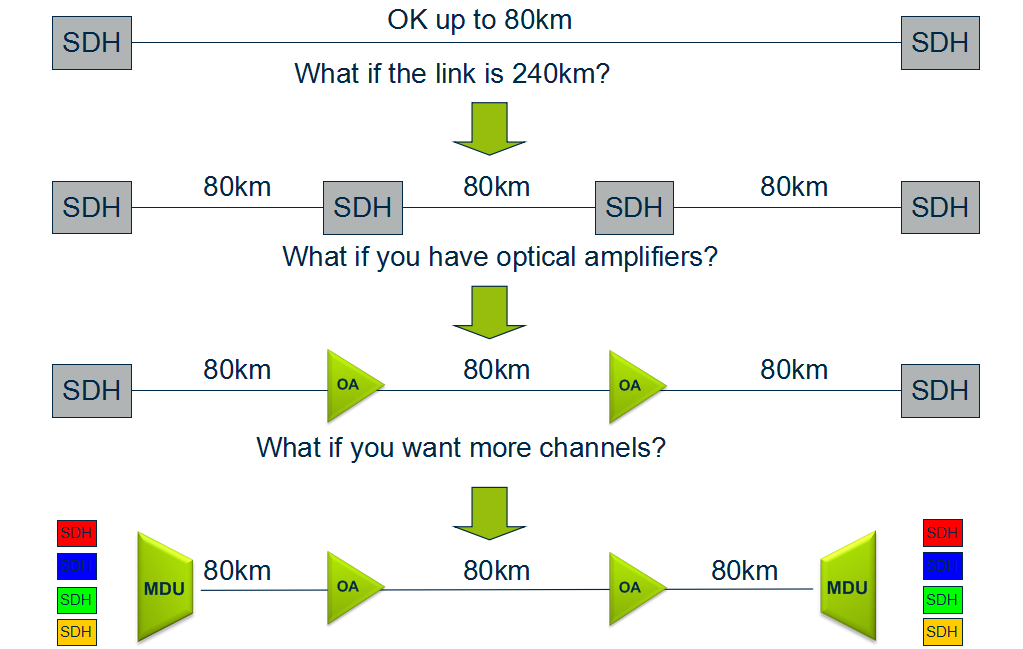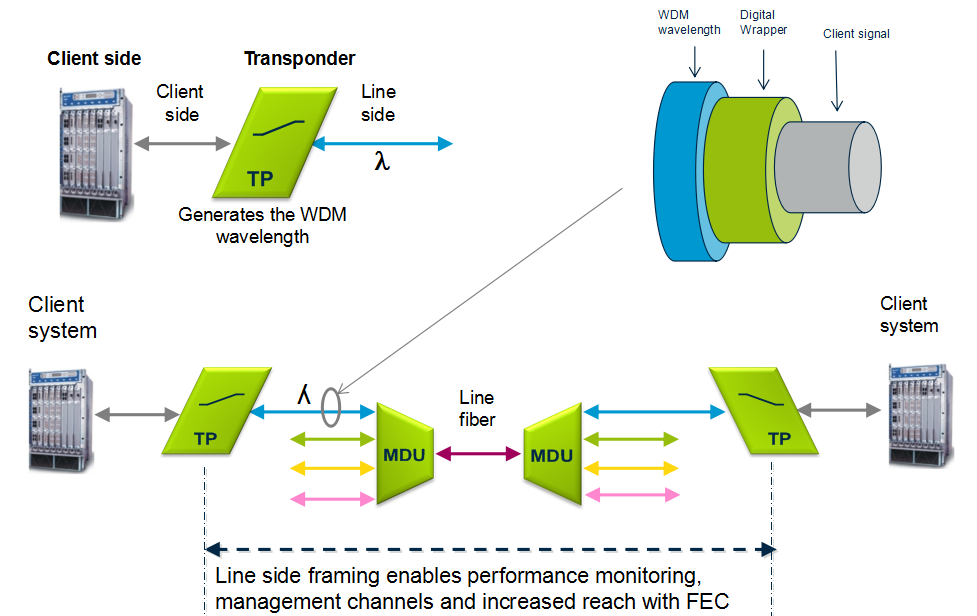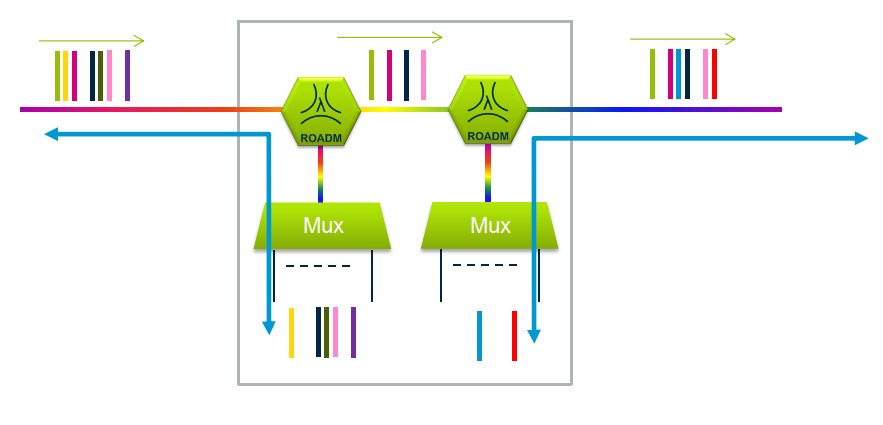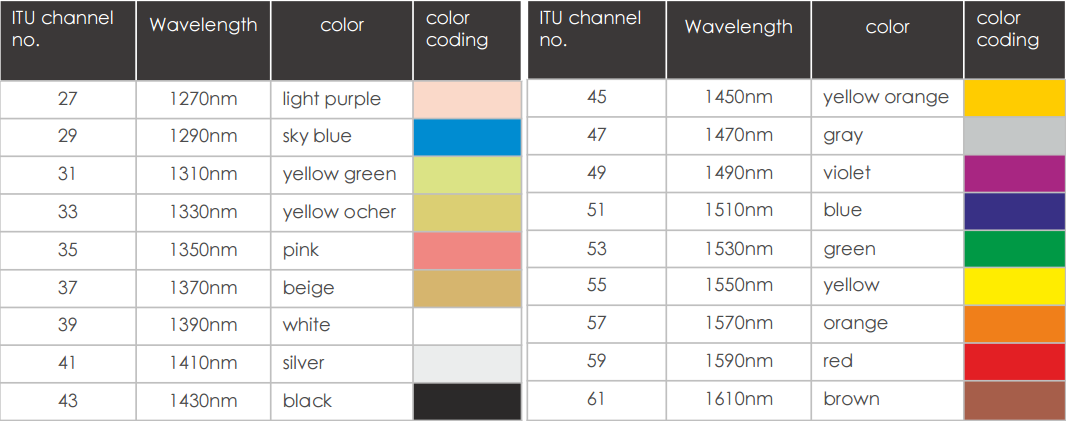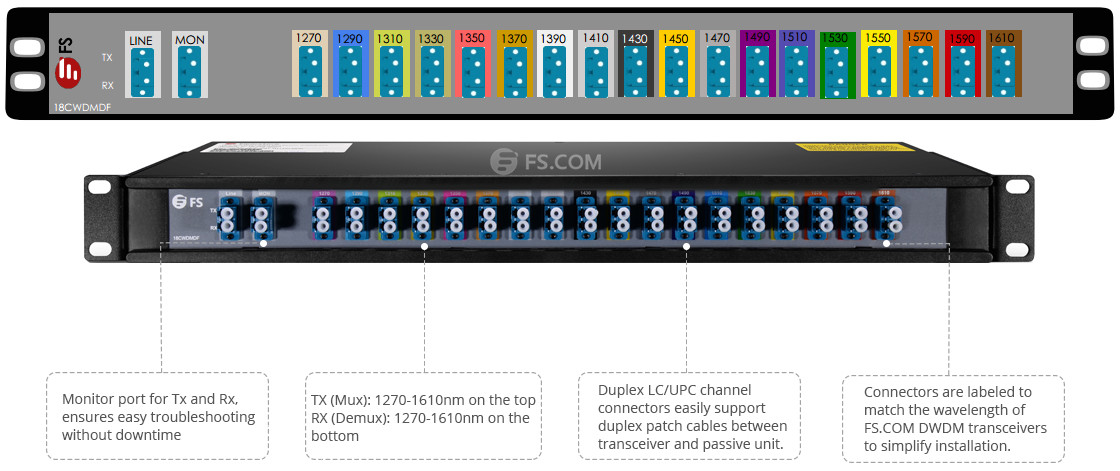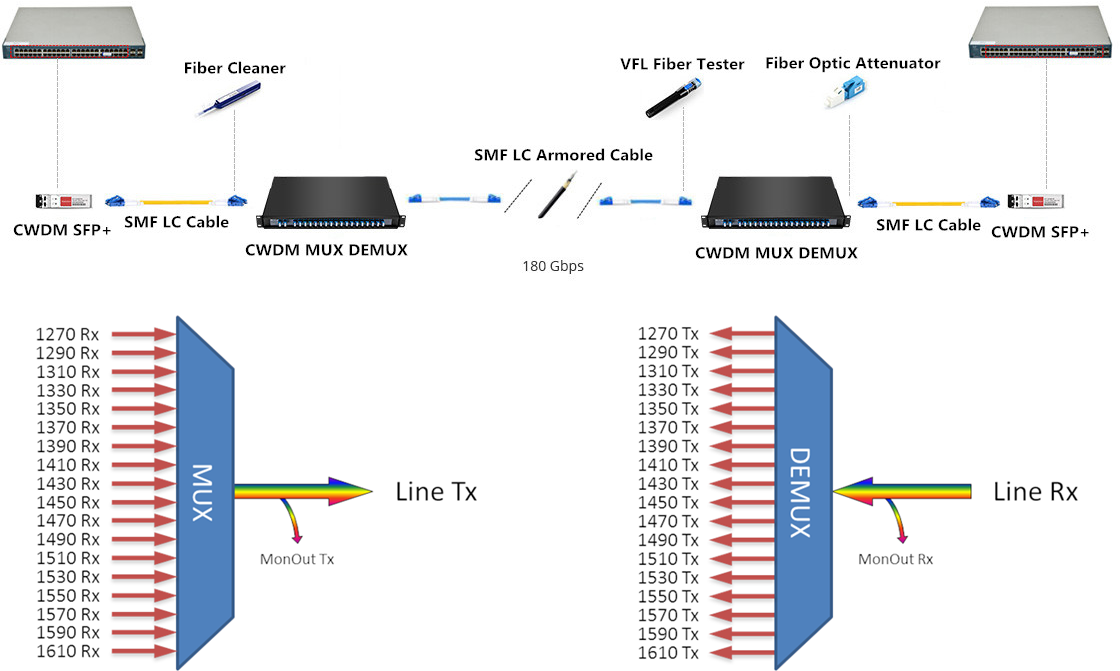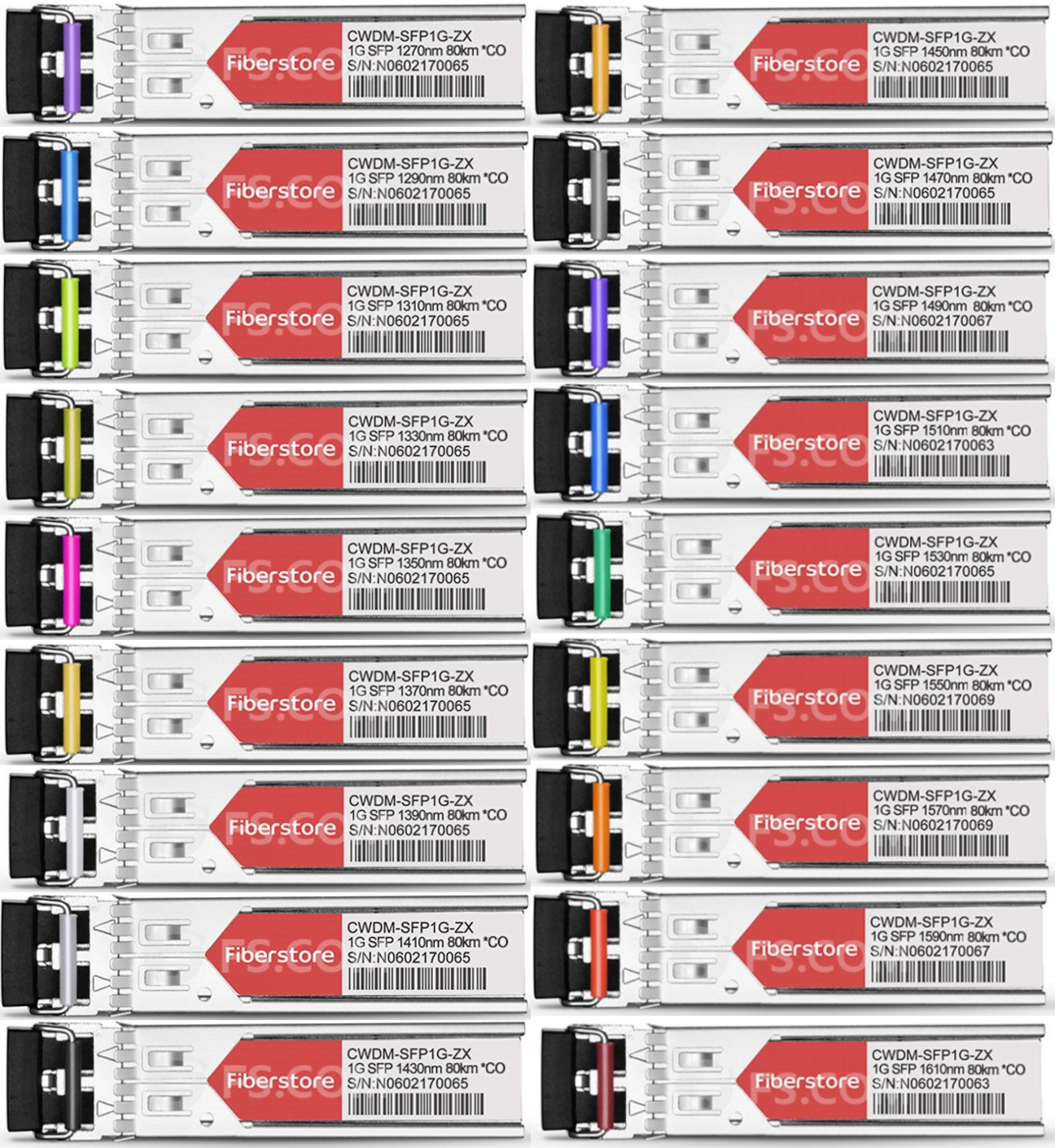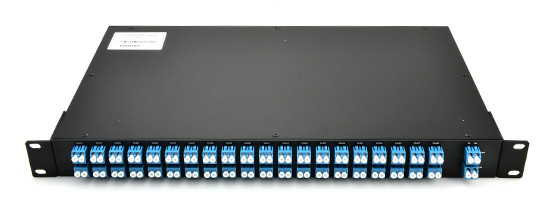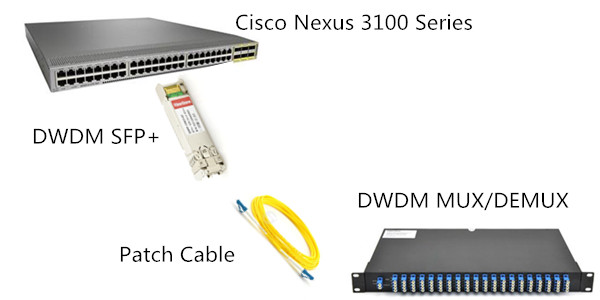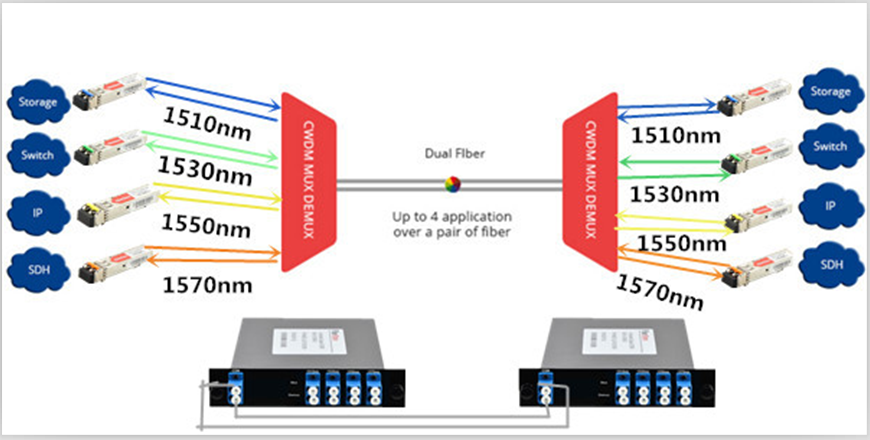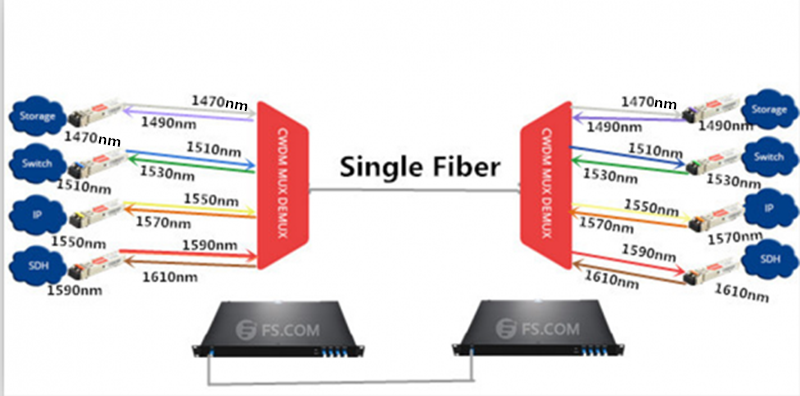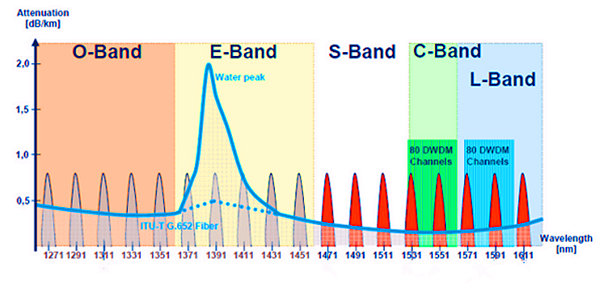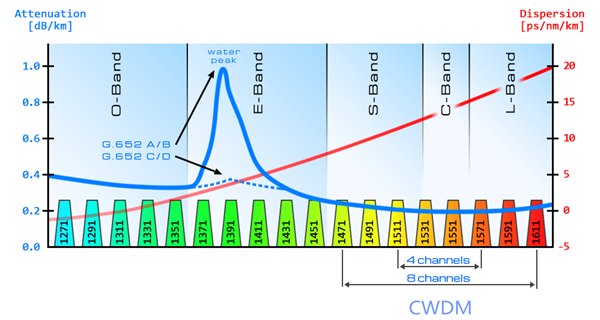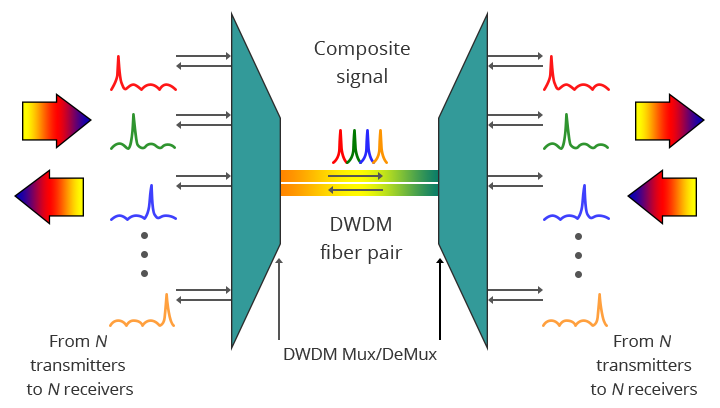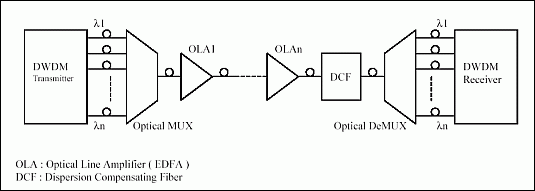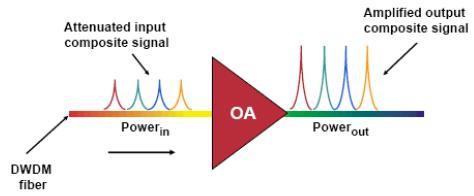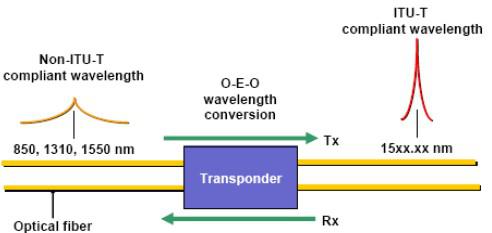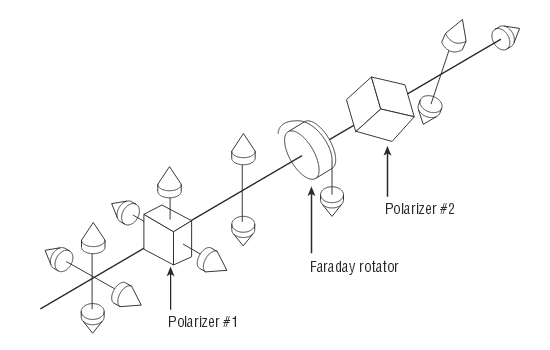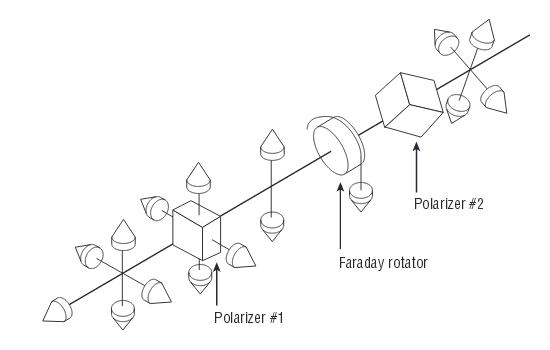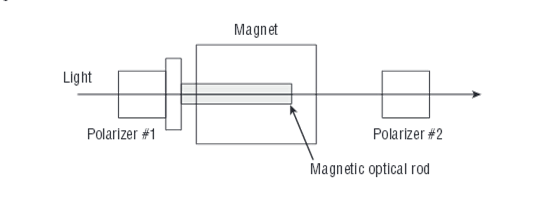CWDM technology has proven itself to be a cost-effective and simplified method for network managers to optimize the existing infrastructure. The adoption of CWDM system into metro and regional network is constantly on the rise and it also extends the reach to the access networks. CWDM is becoming more widely accepted as an important transport architecture owing to its lower power dissipation, smaller size, and less cost. This article will focus on the challenges concerning CWDM network testing, and provide several methods to help overcome them.
CWDM configuration is usually based on a single-fiber pair: one fiber is for transmitting and the other for receiving. The following figure shows the most basic configuration of optical network with 4 channel CWDM MUX/DEMUX: it often delivers eight wavelengths, from 1471 nm to 1611 nm, with 20 nm apart. A CWDM architecture is quite simple. It only has passive components like multiplexers and demultiplexers, without any active elements such as amplifiers. However, using CWDM as a means of increasing bandwidth also brings network characterization and deployment challenges, which will be discussed in the following section.
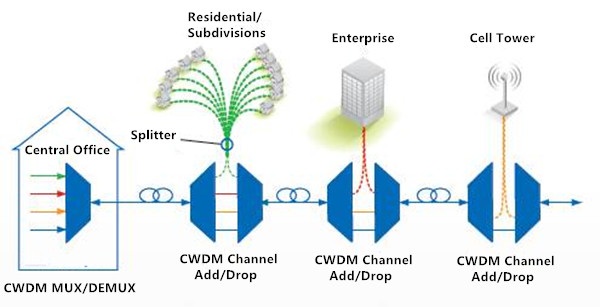
The challenges of CWDM network testing mainly lie in three phases: construction and installation, system activation and upgrade or troubleshoot. Here we provide solutions for each.
During construction and installation process, it is essential to conduct physical-layer tests on the fiber from the head-end to the destination. Single-ended testing with an OTDR is definitively an advantage as it optimizes labor resources. In this case, the objectives are to characterize the entire link (not only the fiber) to include the add-drop multiplexers (OADM) and to guarantee continuity up to the final destination. However, testing at standard OTDR wavelengths, such as 1310 nm and 1550 nm, cannot be done in such conditions as these wavelengths are filtered out at either OADM, never reaching the end destination. Then how to test such a link?
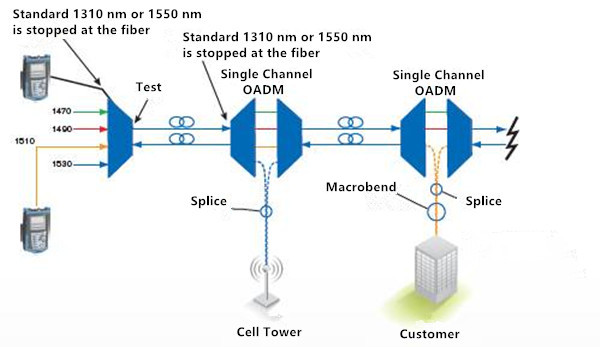
Solution: Adopting a specialized CWDM OTDR. With CWDM-tuned wavelength, the CWDM OTDR is capable of performing an end-to-end test by dropping each test wavelength at the correspondent point on the network, allowing the characterization of each part of the network directly from the head-end. Which is considered time and labor saving since one don’t have to access. It also helps to speed up the deployment process as the technician will test all drop fibers from a single location.
Since CWDM network architecture is rather basic which contains no active components like amplifiers, the only things that can prevent proper transmission in a CWDM network system are transmitter failure, sudden change in the loss created in an OADM or manual errors, bad connections for example. To deal with these problems, one has to look at the signal being transmitted.
Solution: A CWDM channel analyzer is ideal to handle this challenge. It works to quickly determine the presence or absence of each of the 16 wavelengths and their power levels. Many CWDM OADM have tap ports, which means that there is a port where a small portion of the signal is dropped. Taps are typically 20 dB weaker than the main signal. If these taps are not present, a CWDM analysis should be performed. It consists of unplugging the end user to use the main feed for the analysis. To be ready for all possibilities, a CWDM channel analyzer should cover a power range going as low as –40 dBm, while being able to test the entire wavelength range in the shortest time as possible.
In the maintenance and troubleshoot phrase, when the network is live and a new wavelength is added, one should figure out two questions: is the link properly set up? And is my wavelength presents and well?
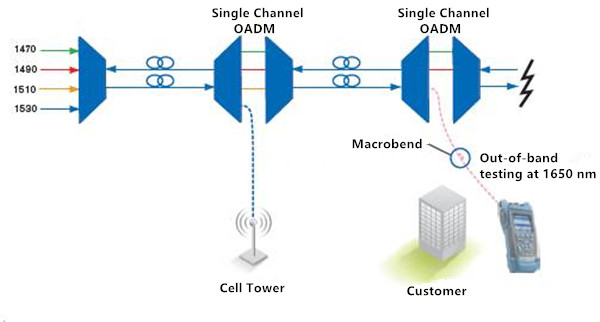
Solution: Two approaches are available to check if a link is set up properly: a CWDM OTDR approach or an out-of-band approach. The CWDM OTDR approach is relatively simple when a new customer is added. With CWDM OTDR, one can perform CWDM network testing without having to wait for the customer or to go to the cell tower sites. The wavelength can be turned on at the head-end. Which speed testing process greatly.
The OTDR and channel analyzer combo are also useful when a single customer has issues. The channel analyzer will reveal if the channel is indeed present and within power budget. If not, the CWDM OTDR can be used to test at that specific wavelength or an out-of-band 1650 nm OTDR test can be performed from the customer’s site to detect any anomalies on the link, all without disconnecting the head-end since the OADM will filter out the 1650 nm, therefore not affecting the remainder of the network.
CWDM testing challenges may be inevitable during each phase of the deployment, but with specialized equipment, these challenges can be overcomed completely. Tools including a CWDM OTDR, a CWDM channel analyzer and an out-of band OTDR are proved effective and valuable to reduce downtime and increase bandwidth at a minimum cost.




